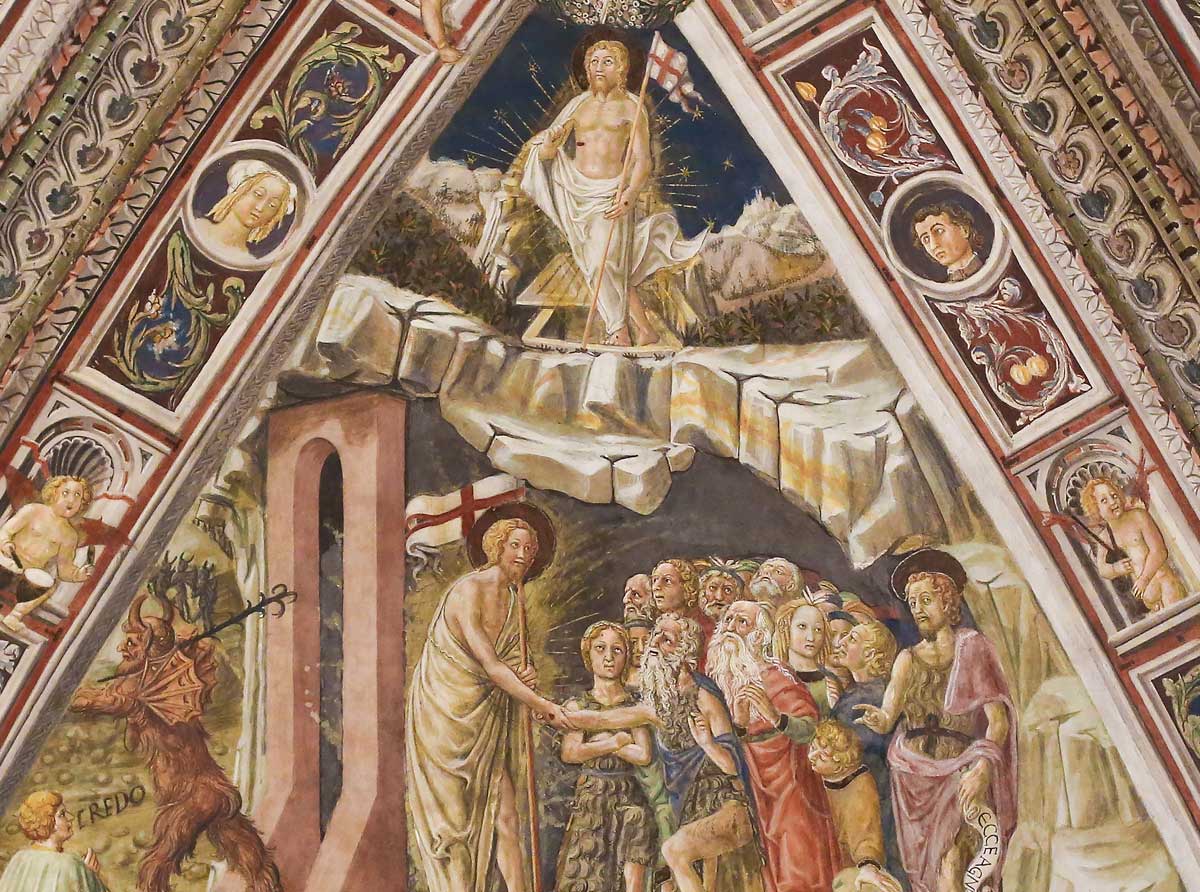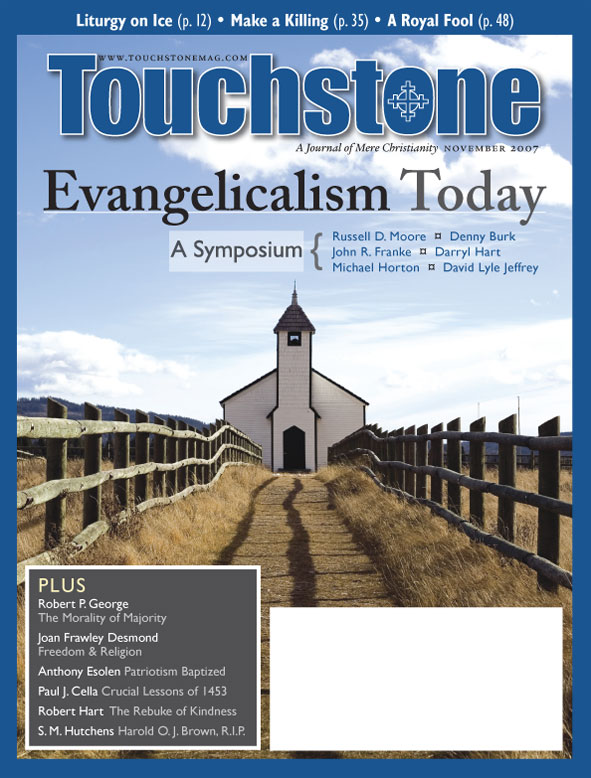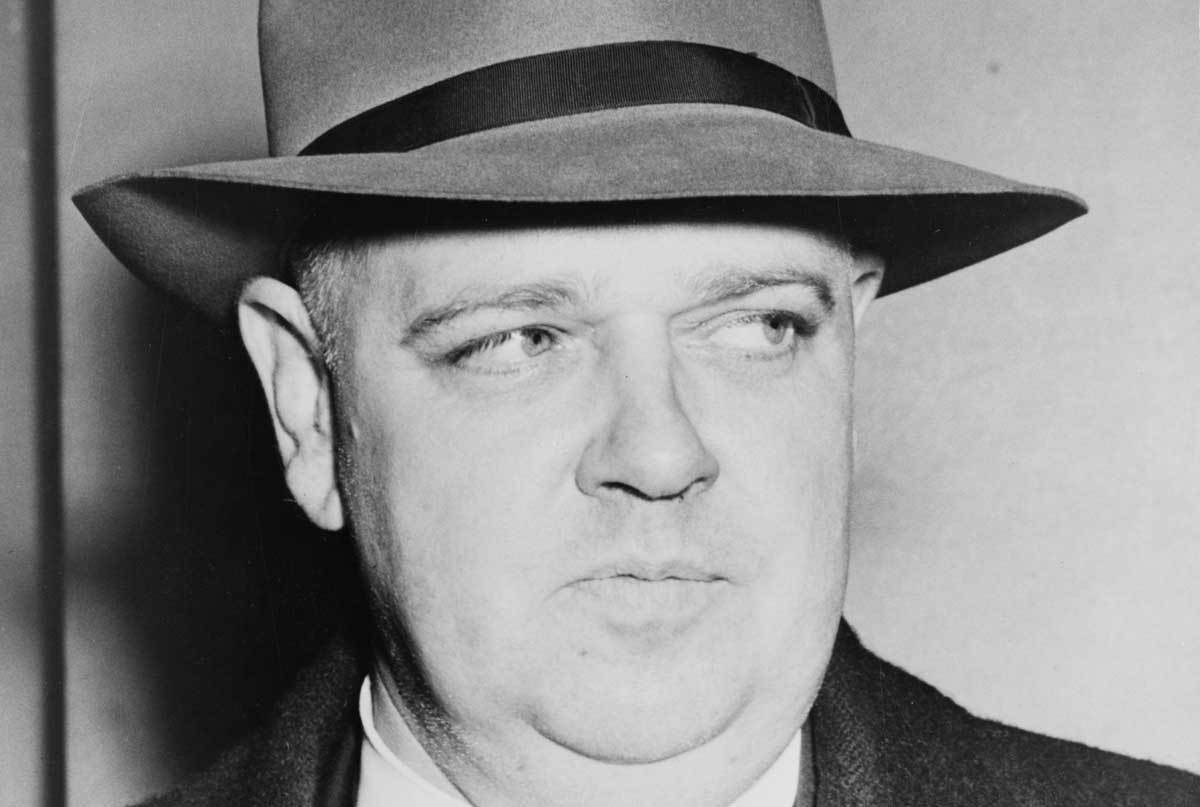Book Review
Making a Killing
A Concise History of Euthanasia: Life, Death, God, and Medicine by Ian Dowbiggin
Rowman & Littlefield, 2005
(172 pages, $22.95, paperback)
The Modern Art of Dying: A History of Euthanasia in the United States by Shai Lavi
Princeton University Press, 2005
(226 pages, $29.95, hardcover)
The Future of Assisted Suicide and Euthanasia by Neil Gorsuch
Princeton University Press, 2006
(311 pages, $29.95, hardcover)
As the Terri Schiavo case illustrated so poignantly a couple of years ago, debates over end-of-life decisions still stir passions and arouse contentious debate, and the dispute is heavily influenced by religious and philosophical presuppositions (on both sides). How could it be otherwise?
Two recent works on the history of euthanasia, Ian Dowbiggin's A Concise History of Euthanasia and Shai Lavi's The Modern Art of Dying, and a recent book on The Future of Assisted Suicide and Euthanasia by Neil Gorsuch, exemplify the differences that have polarized public and scholarly opinion.
While Dowbiggin carefully examines the history of the euthanasia movement to present a cautionary tale, Lavi presents a selective and sometimes inaccurate history to advance a particular legal position. Gorsuch sets forth an erudite legal argument that effectively undermines Lavi's argument.
Dowbiggin depicts the rise of the euthanasia movement as a product of broader religious, ideological, and social developments influencing the medical profession from without, but Lavi believes the movement arose primarily through changes within medical practice, as physicians in the nineteenth century began to play a more active role in relieving pain at their patients' deathbeds.
Lavi portrays legal euthanasia as an irresistible development fostered by modern medical practices. Dowbiggin believes the euthanasia movement has stalled (at least in the Anglo-American world), a development Gorsuch hopes to ensure.
Dowbiggin seems to favor Catholic and conservative Protestant positions on euthanasia. Lavi openly dismisses Catholic teachings on bioethics as "medieval doctrine" and eschews any objective moral standards. Gorsuch insists that his arguments are defensible on secular grounds and eschews overt religious arguments, though he recognizes that his views comport well with traditional Christian positions. The debate is on.
Inescapable Tragedy
Dowbiggin, a professor of history at the University of Prince Edward Island and author of the excellent A Merciful End: The Euthanasia Movement in Modern America (2003), opens his book with an illustration of the complexities of end-of-life decisions. In 1998 Maurice Genereux, a Canadian physician, was sentenced to two years in prison for helping a patient commit suicide. Testifying against him was Mark Jewitt, happy he was still alive after surviving a suicide attempt using drugs prescribed to him for that purpose by Genereux.
This episode reminds us, -Dowbiggin writes, "that determining whether a patient really wants to die is anything but straightforward." Woven throughout his work are many reminders of the inescapable abuses that legalized euthanasia would bring in its train. "Whatever the motives, however, the result is all too often human tragedy."
However, he does not present the debate as merely a matter of pragmatic considerations. He arguesconvincingly that it is rooted in value systems, not in recent innovations in medical -technology.
There were, he notes, no significant medical advances in the nineteenth century that created support for assisted suicide, and the first proponents were not physicians. Rather, secularization and the growing acceptance in educated circles of Darwinism and eugenics ideology changed many people's attitudes toward death, dying, pain, and -suffering.
Indeed, as he explains in the first chapter of this very useful introduction to the topic, after eclipsing Greco--Roman medical practices in late antiquity, the Judeo-Christian prohibition on suicide and assisted suicide prevailed throughout the Middle Ages and remained uncontested in Western societies until the nineteenth and twentieth centuries.
Attitudes toward suicide had begun to soften in the eighteenth and nineteenth centuries under the secularizing influence of the Enlightenment. Enlightenment thinkers like Hume and Voltaire campaigned against prohibitions on suicide, which they thought infringed on individual liberty. However, as Dowbiggin points out, some of them—like many later euthanasia proponents—sometimes blurred the distinction between individual liberty and social utility by praising those who would kill themselves when their life was no longer useful to society.
Only in the late nineteenth century did support for physician-assisted suicide emerge. Beginning in 1870, early proponents of euthanasia led a frontal assault on the Christian sanctity-of-life ethic. As the movement gained ground in the twentieth century, it thrived mostly among atheists, agnostics, and Unitarians who rejected the Christian -consensus.
He concludes that euthanasia currently has more support in some European countries because they are more secularized than the United States, where the euthanasia movement seems at a stand-still after gaining ground in the twentieth century. Dowbiggin shows that Christian opposition to euthanasia has played a significant role in stymieing the legalization of euthanasia in states whose legislatures considered it.
Contrary Readings
Lavi's interpretations run contrary to Dowbiggin's. His book, he writes, "add[s] layers of complexity to the overly simplistic understanding of euthanasia as murder, by showing historical transformations in the legal guardianship of life."
Lavi, a professor of law and sociology at Tel Aviv University, intends to show that euthanasia is inextricably embedded in modern medical practice and is thus unstoppable. He supports his position by focusing on "lethal dosing" and "mercy killing," to try to show the legal ambiguities surrounding some kinds of medical killing.
By "lethal dosing" he means the practice of administering painkillers to dying patients, even if it unintentionally hastens death. He scoffs at the "double effect" doctrine commonly used to justify this medical practice, which differentiates between intentionally killing a patient and palliative care that as an unintended by-product shortens a patient's life.
Thus, he argues, any hastening of death—whether intentional or unintentional—is the same as physician-assisted suicide. (This is why he chooses the controversial term, "lethal dosing.")
Having blurred these distinctions, he argues that euthanasia "has become a reality even for those who oppose it," so we should simply accept it. However, he does not think that legal regulation of euthanasia is possible, since we may not be able realistically to regulate "medical technique," and so he ends his book arguing that euthanasia should not be formally legalized, but neither should it be penalized. The effect of this, of course, is de facto legalization.
Gorsuch, a lawyer with a doctorate in legal philosophy from Oxford who works in the Department of Justice, will have none of this. He begins his analysis by arguing that "all human beings are intrinsically valuable and the intentional taking of human life by private persons is always wrong."
He maintains a cool, rational tone while dismantling the arguments of those supporting legalization of assisted suicide and euthanasia. For example, he persuasively argues not only that the doctrine of double effect is rational, but that it has served well as a legal basis for treating end-of-life decisions. The key element in legally determining which medical actions are permissible is to determine whether or not the intent is to kill the individual.
He also shows that their positions lead to legal and moral results that almost no one will accept. Those using individual autonomy as their primary argument for assisted suicide, he notes, cannot limit its use to those with terminal illnesses (as Oregon's law does) or to those in pain. The argument gives any consenting adult the right to assisted suicide and even euthanasia, a position that most Americans reject.
He also demonstrates that utilitarian arguments and policies attempting to create the greatest happiness for the greatest number lead to insurmountable difficulties. Utilitarian calculations are subjective and have no firm basis, since we have no reliable way to calculate pleasure and pain, nor can we reliably predict the future. Also, utilitarian arguments cannot logically exclude nonvoluntary euthanasia.
Not Inevitable
So, is the legalization and widespread acceptance of euthanasia inevitable? No. Lavi only thinks it is, because he believes Christian medical ethics are already defunct and irrelevant to contemporary society. ("The problem of absolute prohibitions arises neither in medical practice nor, more generally, in the moral and legal principles governing medical action," he declares at one point.) He assumes that everyone already shares his secular outlook, so that nothing can withstand the onward march of "medical technique."
Gorsuch envisions a quite different future, but despite his compelling demonstration that euthanasia can be opposed on secular grounds, it seems to me that his views will not completely persuade those who have entirely jettisoned Judeo-Christian teaching. For some secularists today, human rights and equality are not objective values, nor is human life objectively valuable, as it is for him.
Fortunately, most Americans lean more toward Gorsuch's presuppositions than Lavi's, so I am cautiously optimistic that Gorsuch's views could prevail. As Dowbiggin shows, Christianity has in the past stymied the euthanasia movement. Presumably, it could continue to do so in the future. Unless, that is, Christianity commits suicide. •
Richard Weikart is professor of history at California State University, Stanislaus, and author of From Darwin to Hitler: Evolutionary Ethics, Eugenics, and Racism in Germany and Hitler's Ethic: The Nazi Pursuit of Evolutionary Progress (both from Palgrave Macmillan). Some of his writings can be found at www.csustan.edu/history/faculty/weikart.
subscription options
Order
Print/Online Subscription

Get six issues (one year) of Touchstone PLUS full online access including pdf downloads for only $39.95. That's only $3.34 per month!
Order
Online Only
Subscription

Get a one-year full-access subscription to the Touchstone online archives for only $19.95. That's only $1.66 per month!
bulk subscriptions
Order Touchstone subscriptions in bulk and save $10 per sub! Each subscription includes 6 issues of Touchstone plus full online access to touchstonemag.com—including archives, videos, and pdf downloads of recent issues for only $29.95 each! Great for churches or study groups.
Transactions will be processed on a secure server.
more on history from the online archives

14.6—July/August 2001
The Transformed Relics of the Fall
on the Fulfillment of History in Christ by Patrick Henry Reardon

15.6—July/August 2002
Things Hidden Since the Beginning of the World
The Shape of Divine Providence & Human History by James Hitchcock
more from the online archives
calling all readers
Please Donate
"There are magazines worth reading but few worth saving . . . Touchstone is just such a magazine."
—Alice von Hildebrand
"Here we do not concede one square millimeter of territory to falsehood, folly, contemporary sentimentality, or fashion. We speak the truth, and let God be our judge. . . . Touchstone is the one committedly Christian conservative journal."
—Anthony Esolen, Touchstone senior editor










